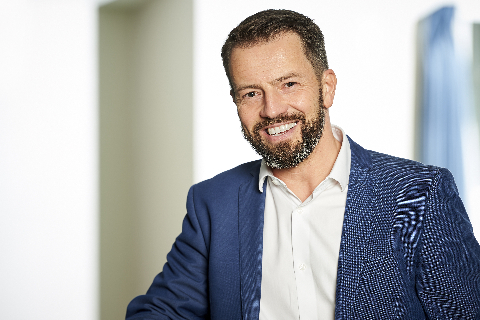Scars, whether post-surgical or following trauma, can cause ongoing pain, restricted mobility, and impaired function. This course, delivered by internationally recognised educator Jonathan Hobbs, will provide participants with both the theoretical foundation and practical skills to use dry needling effectively in the management of scar-related pain, healing, and mobility restrictions.
The programme will focus on the Hobbs Paradigm – 5 Reasons to Needle, detailing the mechanical and physiological mechanisms underpinning dry needling interventions for scars. Participants will gain competency in targeted local, peri-structural, and myofascial techniques, supported by case-based examples and hands-on practice.
The course aims to:
Develop participants’ theoretical knowledge of dry needling and its role in the treatment of scar pain, healing, and mobility.
Develop participants’ practical skills in the safe and effective use of dry needling for scar-related presentations.
By the end of the course, participants will be able to:
Safely and effectively employ dry needling to a variety of anatomical locations for scar pain, healing, and mobility.
Apply the Hobbs Paradigm to select appropriate needling approaches based on the clinical presentation.
Combine dry needling with adjunctive strategies such as manual therapy, exercise, and patient advice for optimal clinical outcomes.
Local trauma, inflammation & healing response – CGRP, NO, NGF loaded.
Local analgesia – opioid response.
Myofascial effect & mechanical responses – range of motion and functional improvements.
Segmental analgesia & responses – A delta, C fibres, dermatomal/myotomal.
Central & systemic effects – autonomic regulation, descending opioid, ACTH.
Biological plausibility linking dry needling to improved scar healing, analgesia, and mobility.
Four overlapping phases: haemostasis, inflammatory, proliferative, and remodelling.
Key events: fibrin clot formation, angiogenesis, epithelial regrowth, collagen synthesis and alignment.
Role of mesenchymal stem cells in differentiation, proliferation, and migration to wound site.
Wound characteristics: location, size, shape.
Patient-related: age, infection, obesity, anaemia, diabetes, glucocorticoids, chemotherapy, ionising radiation.
Surgical technique: suture material, precision, tension control, use of adhesives or staples.
Primary healing: closely apposed wound edges, minimal strain, optimal regeneration.
Secondary healing: separated wound edges, myofibroblast contraction, granulation tissue proliferation, hypertrophic scar formation.
Thread Needling - peri-structural approach along scar lines.
Surrounding the Dragon - peri-structural needling encircling the scar.
Slaying the Dragon - direct structural needling, including matrix and threading variations.
Indications: post-surgical scars, local healing enhancement, focal lesions.
Adjunct: EA-stim (2–20 Hz) for tissue healing and swelling control.
When discomfort is expected:
Step 1: Segmental analgesia – peripheral myotomal or spinal segmental needling.
Step 2: Central/systemic analgesia – peripheral and perineural needling for parasympathetic effect.
When minimal discomfort is expected:
Step 3: Local healing and analgesia – surrounding or adjacent to the target tissue, incorporating acupuncture points if available.
Step 4: Myofascial effect – needling trigger points in associated muscles impacting the scar area (e.g., rectus abdominis for C-section scars).
Application of thread needling, surrounding the dragon, and slaying the dragon techniques.
Case studies and clinical scenarios, including ACL reconstruction with patella tendon graft, total knee replacement scars, thoracotomy, and C-section.
Matrix needling for bruising – observation of healing progression.
Participants will leave with:
A clear understanding of when and why to use dry needling for scars.
Competence in local and myofascial needling techniques.
The ability to integrate these approaches into a comprehensive scar management plan.

Physiotherapist | Lecturer
BSc MSc MCSP MHCPC MAACP MBMAS FHEA
Date: 29th October 2025
Instructor: Jonathan Hobbs MCSP MSc FHEA
08:30 – 09:00
Registration & Welcome Coffee
Participant sign-in, course materials distribution, and networking.
09:00 – 09:15
Course Introduction
Welcome and overview of the day.
Learning outcomes and objectives.
Safety considerations and scope of practice.
09:15 – 10:30
Session 1 – Theoretical Foundations
Pathophysiology of scar formation.
Primary vs secondary healing.
Process of wound healing – haemostasis, inflammatory, proliferative, and remodelling phases.
Factors influencing healing (patient-related, wound-related, surgical).
10:30 – 10:45
Coffee Break
10:45 – 12:15
Session 2 – The Hobbs Paradigm: 5 Reasons to Needle
Local trauma, inflammation & healing response.
Local analgesia.
Myofascial effects & mechanical responses.
Segmental analgesia & responses.
Central & systemic effects.
Tissue layers to needle (skin, adipose, fascia, muscle, bone – viscera avoided).
12:15 – 13:15
Session 3 – Practical Demonstration: Local Needling Techniques
Thread Needling.
Surrounding the Dragon.
Slaying the Dragon (matrix and threading variations).
Indications and technique selection.
13:15 – 14:15
Lunch Break
14:15 – 15:30
Session 4 – Practical Application: Hobbs Paradigm in Clinical Context
Application steps when discomfort is expected (segmental and systemic analgesia first).
Application steps when minimal discomfort is expected (local healing, analgesia, and myofascial effects).
Case-based examples – C-section, ACL reconstruction, thoracotomy scars.
15:30 – 15:45
Coffee Break
15:45 – 16:45
Session 5 – Supervised Hands-On Practice
Participant practice of needling techniques under instructor guidance.
Integration with manual therapy and exercise strategies.
Safety and patient communication during scar needling.
16:45 – 17:00
Wrap-Up & Q&A
Summary of key learning points.
Discussion of clinical scenarios.
Certificate distribution and feedback collection.